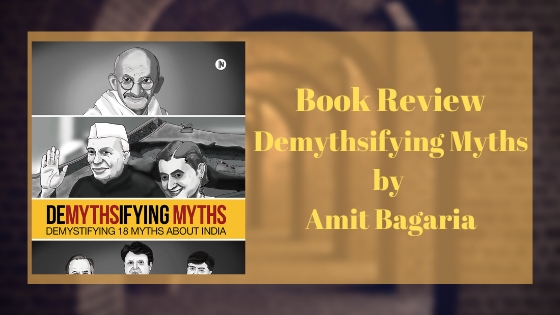
Amit Bagaria is a well-known author of quality non-fiction books today. In India, there are very few authors who write non-fiction books with the intensity that Amit fuses in his content. One of his books, Demythsifying Myths: Demystifying 18 Myths about India, has become very popular among the young readers in India. In this book, as the title aptly and bluntly suggests, he clarifies about 18 big myths that Indians are constantly being served as true or right or the only way possible. So, what are these 18 myths? What are the facts that Amit exposes in his book? What are the lies that have been served as truths? What are the confusions that we need to see through to understand the aspects in an appropriate way?
The book starts with a question that Amit asks the readers. Is India really 5,000 years old? What is India? He argues that India is not 5,000 years old exactly because it was in pieces and not complete as it stands today. But Amit’s idea contradicts the history that we have read about the Mourya empire under the ideological leadership of Chanakya. However, how much this chapter goes along with you can only be found out after you begin reading the book.
There are many interesting chapters in the book that brings to the readers many new things about some well-known figures and facts they have been knowing in the popular culture. For example, Amit Bagaria asks the readers why is Gandhi called a Mahatma? And then he brings some very unknown facts to the fore and the readers will certainly be perplexed but once they dig deep in the history, they will find that the author has been very pin-pointed with facts and narrative. Likewise, Demythsifying Myths moves on to expose some facts about Nehru and then about Indira’s emergency era. Moreover, there are also many interesting chapters that will enlighten the readers into learning many new things – which form of democracy is better? Presidential or Prime Ministerial? What is the issue of Kashmir? What is the truth about Hindu Rashtra? What are the facts about the upper house in parliament that we should know? And many more… and the total number is 18, to be precise.
Many book reviewers in India writing for leading book review websites in India have praised the book for its precision in narrating the misdeeds of history.
I am sure that the readers will like this book and they will certainly pass it on to the youths who should know about the history and historical facts and important people in black and white… without any doubtful shades of grey. You can read more about this book and find the link to purchase by clicking the link below: